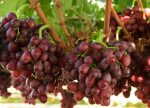Simonis Storm has noted in its latest agri report that it sees a decrease in demand for meat products from both abattoirs and consumers leading to lower prices.
In the report, the firm highlights that engagements with various stakeholders indicate that sales for basic food items have been declining in recent months and “no buying power amongst consumers” is frequently cited as the main reason for this.
“Prices for live animals at auctions have been decreasing due to a decrease in demand as a result of loadshedding. South African farmers struggle to slaughter live animals and retailers struggle to store finished meat products in freezers/fridges due to electricity supply disruptions. Should electricity supply issues be resolved, farmers will have excess stock to sell and so prices could drop even further,” the firm said, adding that however, regulated pig prices are on an upward trend in order to assist local producers with market access given the 44.9% y/y decrease in pork imports in February 2023.
Livestock marketing activity (including both slaughtering and export activity) remains on a downward trend for most segments in the livestock sector. Live exports decreased by 16.9% y/y in February 2023 due to lower demand for weaners from South Africa according to the Meat Board.
Restocking investments by local farmers are filtering through to monthly production data, given that sheep marketing increased by 44.0% y/y in February 2023. The improved national herd is expected to maintain momentum in the sheep sector going forward. Goat marketing recorded the largest annual decline of 49.7% y/y in February 2023, followed by cattle marketing activity that declined by 24.5% y/y.
Fishing
With regards to fishing, the firm expressed that the value of fish exports increased by 14.9% y/y in January 2023, compared to 21.5% y/y in December 2022. On a monthly basis fish exports increased by 13.3% m/m in January 2023, compared to 74.4% m/m in December 2022. Increased onshore processing activity together with a weak Rand exchange rate is currently benefiting fish export earnings.
“This could prevent a sharp drop in fish export earnings, should local fish landings decrease. In our previous report, we indicated that alleged illegal fishing by Angolan vessels has significantly worsened the local stock of certain fish species and this could negatively impact on landings in 2023.
“We continue to see more investment in onshore activities by local fishing companies, with Do Mar Fishing being the latest to invest in logistics according to media sources. We understand that part of the logistics hub will allow for container storage, handling and packing for their vessel fleet. This is consistent with previous reports where we highlighted that onshore facility investments are likely to be pursued by local fishing companies and so benefiting the manufacturing sector,” the firm said.
Horticulture
Giving an update around the state of horticulture, the research firm said that most statistical models at the International Research Institute for Climate and Society (IRICS) shows that La Nina conditions (above average rainfall) are largely expected for Southern Africa at last until May 2023. However, the probability El Nino (below average rainfall) has increased to 56% – 59% in 2H2023 when Namibia’s Summer rainfall is supposed to start.
El Nina and La Nina occur every two to seven years and typically last between nine and twelve months according to IRICS.
“Local dam levels are on average 28 percentage points below levels recorded 12 months ago. Also, farmers we engaged in various areas across the country indicate that rain on their farms have been much lower compared to the same time last year and rain has not been sufficient. We therefore expect production levels in the crop farming sector to be negative in 2023 and so weigh on growth in the agriculture industry,” the firm explained.
The value of imported fertilisers remains elevated above levels seen in the last two years. In 2020, monthly fertiliser imports cost an average N$33 million. This has increased to a monthly average of N$108 million in the last 12 months. High input costs continue to cause significant increases in various crop farming products.
“At the same time, phosphate feed for livestock used to cost about N$240 per bag and now it is over N$600 per bag, keeping input costs for livestock farmers very expensive. In the chicken sector, we are aware that chicken feed has increased by over 60% in 2022 as a result of rising agricultural commodity process following the war in Ukraine.
“In addition to this, South African chicken feed producers cannot maintain adequate production levels due to loadshedding. In this case, local egg producers have to source feed from alternative markets such as Botswana and Zambia. However, it seems unlikely that these countries can provide sufficient stock,” concluded Simonis Storm.










